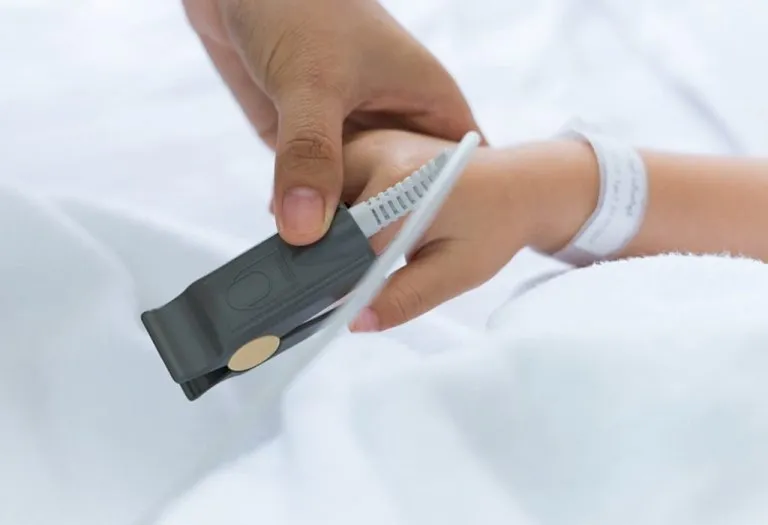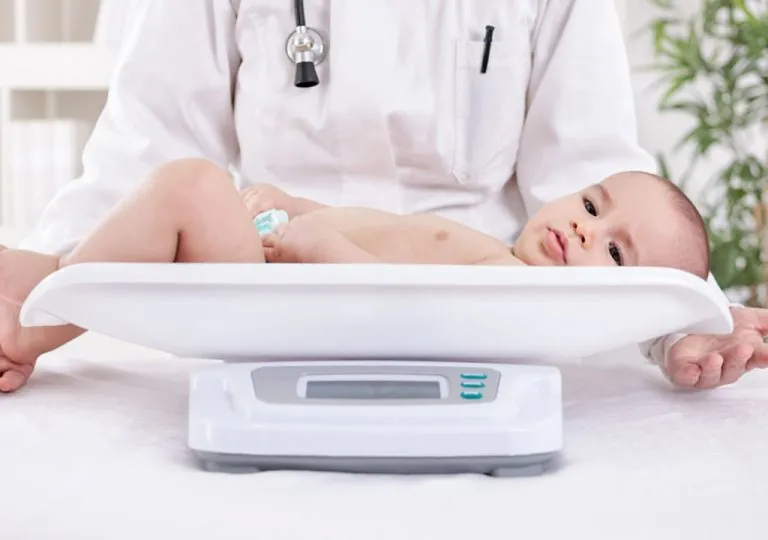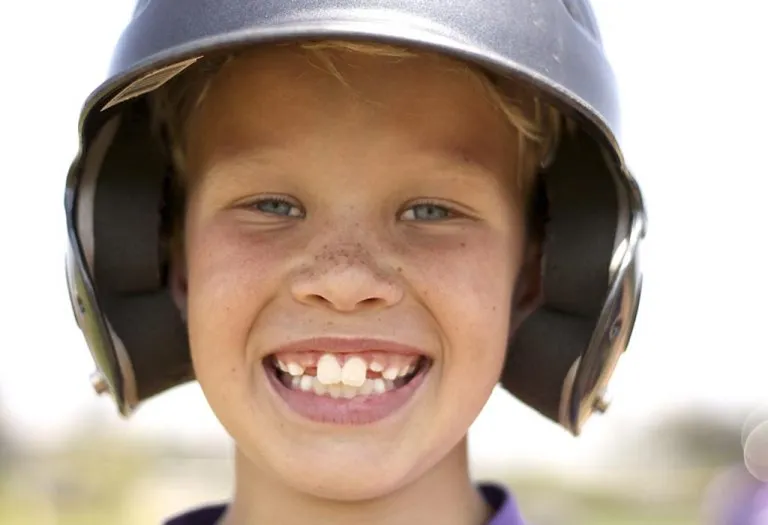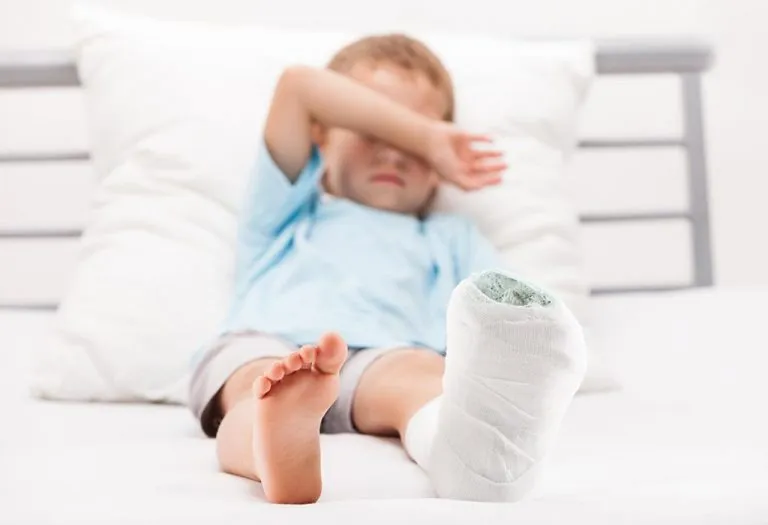Heart Rate for Children – What’s Normal, What’s Not?

- What Is Normal Heart Rate in Children?
- What Is Arrhythmia?
- Who Is at Risk of Developing Arrhythmia?
- Types of Arrhythmia
- Causes of an Irregular Heartbeat
- Signs and Symptoms of an Abnormal Heart Rate
- Diagnosis of Arrhythmia in Children
- Treatment of Arrhythmia in Children
- When and How to Check Your Child’s Pulse Rate?
- How to Take Care of Your Child?
- When to Consult a Doctor?
- FAQs
The heart has a particular rhythm that keeps it healthy and enables it to function the way it is meant. However, sometimes, due to various reasons, the rhythm of the heart, or the rate of heartbeat varies, which may indicate an underlying issue. The condition is also referred to as arrhythmia. While it is not uncommon to see the heartbeat rate fluctuate in children, if it persists for a long duration, your child may need medical attention. Before this, important to know what the normal heart rate for kids is.
This article will provide some knowledge about arrhythmia, and things parents need to remember should their little ones’ need immediate medical attention. Let’s begin with understanding what the normal heart rate in children is.
What Is Normal Heart Rate in Children?

Wondering what the average child’s heart rate is? The normal heart/pulse rate for children varies as per their age. It is also known to slow down a little during sleep. Childrens heart rate is also dependent on the activity of the kid. If your child has been physically active right before taking the pulse rate, then it is bound to be a little higher. Overall health and the emotional state of the child may also contribute to the pulse rate.
Below is a chart of the normal heart rate for kids in different age groups:
| Age | Rate While Awake (beat per minute) |
Rate While Sleeping (beat per minute) |
| Under 28 days | 100-205 | 90-160 |
| 1 month to 1 year | 100-190 | 90-160 |
| 1 to 2 years | 98-140 | 80-120 |
| 3 to 5 years | 80-120 | 65-100 |
| 6 to 11 years | 75-118 | 58-90 |
| 12 to 15 years | 60-100 | 50-90 |
What Is Arrhythmia?
An arrhythmia is an irregularity in the rhythm of the heart. It is caused due to an abnormality of the electrical signals that control contractions of the heart muscles. The occurrence of certain kinds of arrhythmia in children is usually no cause for concern and may not require medical care as it may be based on the activity they engage in. But if it is found that the heart rate of the child doesn’t correlate with the activity and is too high or too low for the activity being performed, then it may be wise to seek a diagnosis from a doctor.
Who Is at Risk of Developing Arrhythmia?
The condition may be prevalent in children who are suffering from congenital heart diseases, are born with narrow hearts or any other heart conditions. Infections, diabetes and sleep apnea can cause damage to the muscles around the heart, which may also put such kids at risk of developing arrhythmia. Also, if your kid has had heart surgeries, is under medication or suffers from a chemical imbalance, then there may be chances of an irregular heart rate.
Types of Arrhythmia
Arrhythmia is categorised based on the variation in the heart rate. There are many types of arrhythmia; most are harmless, but some may be life-threatening.
If the kids heart rate speeds up and becomes too fast, it is known as Tachycardia. If it slows down considerably, it is called Bradycardia. Both conditions are explained in detail below:
1. Tachycardia
Tachycardia is characterised by a faster than normal heart rate and may be caused due to an underlying heart condition, medications or some changes in the physiology. It doesn’t last long enough to cause any serious damage to the organs. There are two significant types of tachycardia.
-
Ventricular Tachycardia
Ventricular tachycardia originates in the ventricles or the lower chambers of the heart. These are not very common in children and might be the result of a serious heart condition.
-
Supraventricular Tachycardia (SVT)
Supraventricular tachycardia is triggered in both the upper chambers (atria) and the lower chambers (ventricles) of the heart. SVT causes the heart rate to go at an abnormal rate of over 220 per minute. It is also known as paroxysmal atrial tachycardia and begins and ends abruptly.
SVT may be caused due to Wolff-Parkinson-White Syndrome, where there is an extra pathway in the heart’s electrical system, which can result in tremors, dizziness, and problem breathing.
There are several types of SVT, which include the following:
- Atrioventricular Reentry Tachycardia (AVRT) – AVRT is caused due to the presence of an additional pathway because of which the electrical signals do not pass through the AV node that controls heart rate. The heart rate increases as two pathways carry electrical signals at the same time.
- Atrioventricular Nodal Reentry Tachycardia (AVNRT) – This condition is similar to AVRT, but the electrical signals here pass through the AV-node.
- Atrial Flutter – The condition is the result of an irregular conduction circuit in the atria causing it to beat very fast. It can prevent blood from being pushed into the ventricles and prevent blood flow to the body cells.
- Atrial Ectopic Tachycardia – Caused as a result of the electrical impulse being originated from a different part (an abnormal cluster of cells) than its usual origin (sinus node), it can result in the untimely contraction of the atrium and a faster heartbeat.
- Junctional Ectopic Tachycardia – In this case, the impulse originates from the abnormal cluster of cells that are located near the AV-node, causing the ventricles to contract before they are due. This results in a faster heartbeat.
There is also a term called Sinus tachycardia which is a natural increase in the heart rate caused by physical activity or change in activity levels. Here the sinus node, which is known as the pacemaker of the heart due to its function of generating electrical impulses, shoots out faster impulses causing a spike in the heart rate.
2. Bradycardia
Bradycardia is characterised by a drastic drop in the heart rate of the child (in most cases, below 50 beats per minute). This can be due to faulty electrical circuits or can indicate that the sinus node isn’t functioning in the supposed manner. In some cases, since the heart rate drops quite low, the heart will not be able to pump blood into the cells, causing a deficiency that may result in life-threatening situations.
Causes of an Irregular Heartbeat
Irregular heartbeat is caused by various reasons including heart conditions like congenital heart disease, chemical imbalances in the body, any kind of trauma to the chest, heart surgery, fever or infections. It can also be due to cardiomyopathy, which is the disease of the muscles of the heart.
Signs and Symptoms of an Abnormal Heart Rate
Recognising the signs and symptoms of an abnormal heart rate is important, especially for younger children who will not be able to communicate what they feel. Amongst infants and toddlers, it may be visible as irritability, paleness, and lack of interest in eating. Older children may be able to tell you if they feel dizzy or feel like their heart has skipped a beat. Some of the common symptoms of an irregular pulse rate are
- Dizziness
- Weakness or fatigue
- Tremors
- Chest pain
- Fainting
- Sweating
- Irritability and paleness in infants
- Shortness of breath
Diagnosis of Arrhythmia in Children
Doctors use various methods to diagnose an abnormality in the heart rate of the child. It is important that you know your child’s medical history and necessary documents so that the doctor can evaluate it and conduct a physical exam to determine whether a further test is necessary.
Here are some of the tests:
1. Electrocardiogram (ECG)
This test measures the electrical activity of your child’s heart. It is painless and can be done in as a resting ECG or an exercise ECG. A resting ECG measures the heart when your child is resting, preferably lying down. An exercise ECG measures the child’s heart rate during an activity like walking or running on a treadmill.
2. Holter Monitor
This is an ECG test that is done over a period of 24 hours or more. The ECG electrodes and attached to the chest of the child and the measurements are taken using a portable recorder. The child is encouraged to engage in normal daily activities. Care should be taken to keep the electrodes from getting wet for the duration of the test.
Holter monitoring includes two kinds of test:
- Continuous monitoring where the ECG is being recorded for the entire duration.
- Event monitoring where the ECG is recorded when an abnormal heart rate is detected.
3. Electrophysiology Study
In this invasive test, a catheter is inserted into the blood vessel that leads to the heart through the arms or the legs of the child. This helps in determining the origin of arrhythmia in the heart and also helps the doctor choose relevant treatments methods.
4. Tilt Table Test
Tilt table test is recommended for children who have instances of fainting that is caused by irregular heart rate. The test measures the variations in heart rate, oxygen supply, and blood pressure in the child during a change in his or her position, like sitting, lying down and standing.
Some doctors may also suggest a chest X-ray, MRI or blood tests for your child if required.
Treatment of Arrhythmia in Children
The treatment for arrhythmia in children is based on the age of the child, the type of arrhythmia, the symptoms, and the frequency of its occurrence. Some of the common courses of treatment include (1):
- Medicines: Anti-arrhythmic medications are prescribed to the child based on the condition and the age to correct an abnormal heart rate.
- Pacemakers: These devices mimic the electrical signals produced by the sinus node. They are surgically implanted into the child’s body (usually near the collarbone) to regulate the heart rate effectively.
- Defibrillator: An implantable cardioverter-defibrillator (ICD) is inserted near the collarbone with wires running from it to the heart. When an abnormal heart rate is detected, the device restores it to a normal heart rate.
- Catheter Ablation: The procedure involves the insertion of a catheter through a blood vessel that leads to the heart. It detects and narrows down the area of the heart where the irregularity is generated, and freezes or destroys those defective cells.
- Surgery: If all other options do not give results, surgery is recommended where the child is put under anaesthesia, and the tissue causing the arrhythmia is surgically removed.
When and How to Check Your Child’s Pulse Rate?
It is good to have an idea of how to check your child’s pulse rate for emergencies. If your child has a heart condition, your doctor may already have instructed you on the ways to check the pulse. However, even if your child doesn’t have a heart condition, it is good to know how to check the pulse rate, especially when you notice one of the following signs:
- Pain in the chest
- Tremors
- The child turns pale or blue suddenly
- Shortness of breath
You may follow the steps below to check your child’s pulse rate:
- Know the pulse points: The points where the artery is closest to the skin, like the neck and the wrist, and the best pulse points.
- Make sure that your child is rested for at least 10 minutes before taking the pulse rate.
- Place your index and middle finger together on the pulse point at the wrist to feel the pulse.
- Count the total number of beats for 15 seconds.
- Multiply the total number of beats by 4 to get the pulse rate.
Avoid using your thumb to feel the pulse, as the thumb also has a pulse point.
How to Take Care of Your Child?
If your child is diagnosed with arrhythmia, it is important that you follow a strict routine to take care of his health.
- Take your child to the doctor for check-ups regularly.
- Check the pulse rate frequently.
- Follow a healthy diet with low cholesterol and fat for a healthy heart.
- Ensure that your child exercises regularly to regulate heart rate.
- Keep track of developments in the treatment of arrhythmia.
When to Consult a Doctor?
Most children have irregular heart rates after intense physical activity. However, if you notice a fast or slow heart rate in your child that does not correlate with the activity, you will need to consult a doctor to avoid complications later on.
FAQs
1. How does a child’s pulse rate change with age?
As children grow, their pulse rate changes. Newborns typically have a higher pulse rate, ranging from 100 to 160 beats per minute (bpm). As they grow older, the rate gradually decreases. For toddlers (1-3 years old), the normal range is 90 to 140 bpm. By the time children reach the age of 10, their pulse rate usually settles between 60 to 100 bpm, similar to adult ranges.
2. How does dehydration affect a child’s pulse rate?
Dehydration can lead to an increased pulse rate in children. When a child is dehydrated, there is less fluid circulating in their body, which means the heart has to work harder to pump blood and maintain blood pressure. This can result in a higher pulse rate. Recognizing the signs of dehydration and ensuring the child stays hydrated is important to maintain a healthy pulse rate and overall well-being.
Children usually tend to engage in a lot of physical activity which may cause variations in the heart rate. It is important for parents to be well-informed about the symptoms to recognise the need to seek help for irregular heart rate in their child.
References/Resources:
1. Arrhythmias Treatment; NIH National Heart, Lung, and Blood Institute; https://www.nhlbi.nih.gov/health/arrhythmias/treatment
2. Sharma. R, Balhara. Y, Sagar. R, Deepak. K, Mehta. M; Heart rate variability study of childhood anxiety disorders (Journal of Cardiovascular Disease Research); National Library of Medicine; https://www.ncbi.nlm.nih.gov/pmc/articles/PMC3144619/
3. Types of Arrhythmia in Children; American Heart Association; https://www.heart.org/en/health-topics/arrhythmia/about-arrhythmia/types-of-arrhythmia-in-children#.WMJ1l1V97IU
4. Palpitations in children and young people; NHS James Paget University Hospitals; https://www.jpaget.nhs.uk/departments-services/children-young-peoples-services/the-cove-childrens-clinic/cardiology/palpitations-in-children-and-young-people/
5. Fast Heart Rate; C.S. Mott Children’s Hospital; https://www.mottchildren.org/health-library/aa73824
6. Pickering. D; How to measure the pulse (Community Eye Health); National Library of Medicine; https://www.ncbi.nlm.nih.gov/pmc/articles/PMC3756652/
7. Helping Children With Congenital Heart Disease Stay Healthy, Active & Fit; American Academy of Pediatrics; https://www.healthychildren.org/English/health-issues/conditions/heart/Pages/Helping-Children-With-Congenital-Heart-Disease-Stay-Healthy,-Active-&-Fit.aspx
Also Read:
Respiratory Rate in Kids
Braces for Children’s Teeth
Heart Murmur in Babies & Children
Was This Article Helpful?
Parenting is a huge responsibility, for you as a caregiver, but also for us as a parenting content platform. We understand that and take our responsibility of creating credible content seriously. FirstCry Parenting articles are written and published only after extensive research using factually sound references to deliver quality content that is accurate, validated by experts, and completely reliable. To understand how we go about creating content that is credible, read our editorial policy here.
























